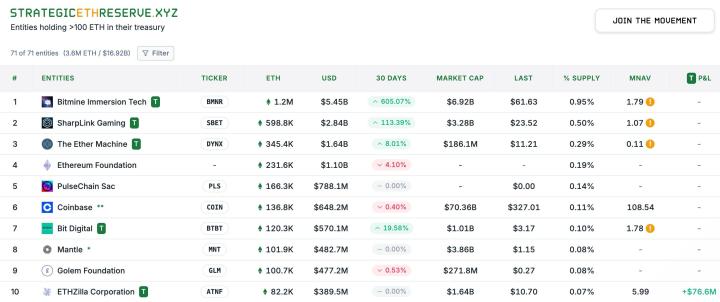After Ethereum moves towards a modular and multi-chain coexistence phase, Layer2 is no longer just a scaling tool, but a fundamental component of the multi-chain world. A significant trend is accelerating - interoperability is becoming the core consensus for reconstructing user experience and protocol collaboration in the Layer2 era. This is not just about technical collaboration, but represents a fundamental transformation of user experience paradigm: from "multi-chain parallel" to "seamless integration".
On May 28th, the 9th L2 Interop Working Group meeting brought the latest progress. This meeting focused on advancing cross-chain protocol standards, core development tools, and a series of new proposals around user experience and liquidity. Centered on the "engineering implementation of collaborative interoperability standards", it focused on multiple core issues, marking the transition of Layer2 interoperability from "concept" to "engineering".
A System Design about the Future of Interoperability
Ethereum's Layer2 scaling solutions have formed a multi-chain parallel landscape, but the complexity of cross-chain interactions still constrains user experience and capital liquidity. The fragmented network environment causes users to manually switch between different chains, and transaction delays and gas costs further hinder the popularity of cross-chain applications.
The previously isolated chain interaction methods are being integrated into a systematic, standardized inter-chain experience protocol layer - a network system closer to real user needs. Interoperability is not just about connecting chains, but about building a "seamless experience" centered on end users. This concept runs through multiple topics in this meeting:
ERC-7786
The ERC-7786 proposal initiated by OpenZeppelin aims to provide an extensible, composable cross-chain messaging standard. Its core design adopts a chain-specific binary address format in coordination with ERC-7930, breaking through the format bottleneck of inter-chain communication.
The specification is currently stabilizing, with the next step extending to gas payment and message verification mechanisms, intending to abstract cross-chain communication from specific protocols towards a protocol-agnostic standard layer.
Interop Wallet v0
The "Interop Wallet v0" launched by the Ethereum Foundation and Wonderland is a forward-looking cross-chain wallet experience experiment. Built on Ambire and only for testnet, it focuses on verifying the actual UX effect of standards like chain-specific addresses (ERC-7828/7930).
EIP-7702
In the context of multi-chain and cross-chain interoperability, the evolution of account abstraction is equally crucial. As Ethereum's latest account enhancement proposal, EIP-7702 allows traditional external accounts to temporarily delegate smart contract execution without changing addresses or migrating assets, obtaining smart account functions. It supports transaction batching, fee sponsorship, and permission management, greatly improving multi-chain wallet user experience and serving as an important technical foundation for cross-chain interoperability.
Open Intents Framework 2.0
Version 2.0 of OIF is being reconstructed by teams including Hyperlane, LI.FI, Across, and OpenZeppelin, aiming to provide developers with a modular framework for intent expression, solving, and execution.
It is not a bridging protocol, but an inter-chain Intent Layer. OIF will support any chain and any DApp to quickly access seamless Intent UX, truly releasing the potential of "users express intent, network completes execution".
ERC-7828 + ERC-7930
The chain-specific address standard proposed by Wonderland is becoming one of the infrastructures of the interoperability era. ERC-7828 provides a human-readable address format (e.g., alice@arbitrum.l2.eth), while ERC-7930 defines the corresponding binary parsing logic.
This structure gives an address "context-awareness" across multiple chains, lowering users' psychological barriers and risk of misoperation in cross-chain interactions. Its deployment will reference the ENS second-level domain system (l2.eth) for governance.
Filler Vaults
The new proposal Filler Vaults from the Socket team provides a mechanism to decouple fund providers from executors. Through a design similar to HLP Vault, Vault holders can delegate strategies to be executed by executors, achieving distributed matching of capital and operational capabilities.
This model is expected to solve the current centralization problem of the solver ecosystem, bringing breadth and elasticity to the intent market.
Mint Support and Exploration
As a member of OP Superchain, Mint has long been concerned with and supported the formulation and practical implementation of cross-chain interoperability standards. In the process of these innovations, Mint will continue to explore the landing applications of these interoperability standards in core ecosystem scenarios, providing users with more efficient and secure cross-chain experiences in the future, helping to build a more unified and efficient Web3 user experience network.
For a new generation of decentralized infrastructure represented by Mint Blockchain, embracing interoperability standards is no longer an "optional" choice, but a fundamental responsibility to co-evolve with the ecosystem.
In Conclusion
With the implementation of these technologies, the multi-chain ecosystem will gradually achieve "scattered in form, united in spirit" - chain differences will be invisible to users, while developers can still enjoy modular expansion freedom. We are in an era where connections are being redefined. Chains are no longer isolated islands; the future of Web3 will not just be multi-chain coexistence, but multi-chain collaboration.
Mint is actively building the interoperability bridge for this era.






